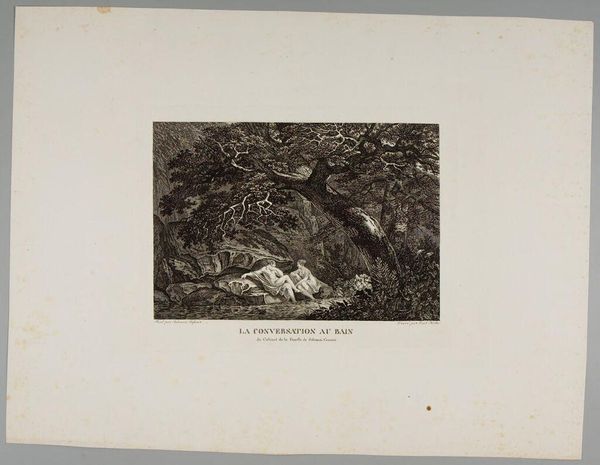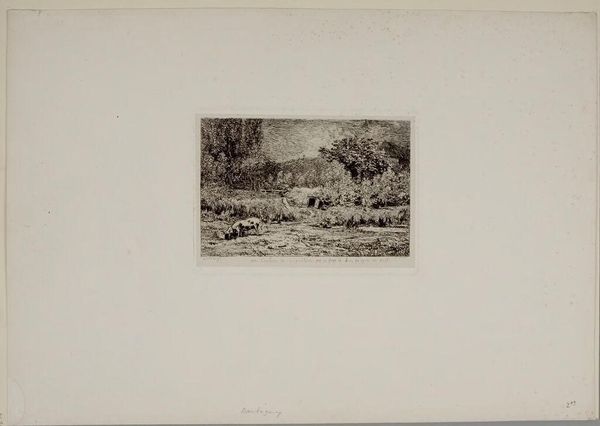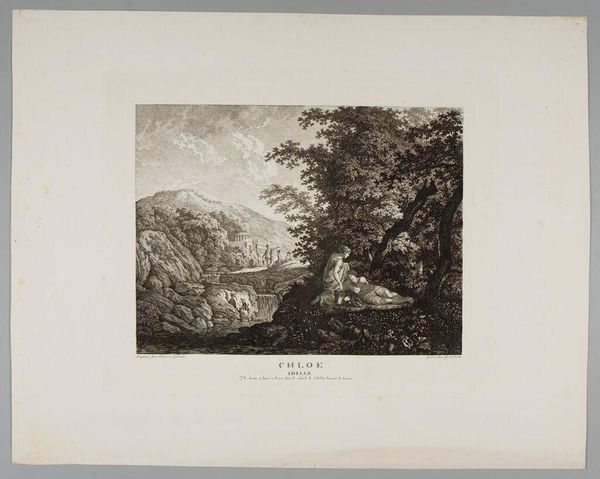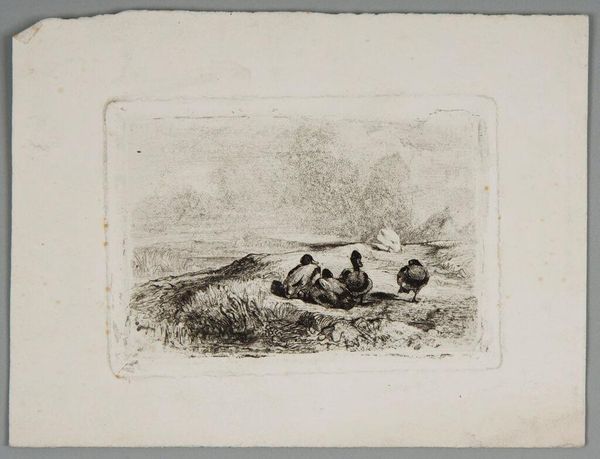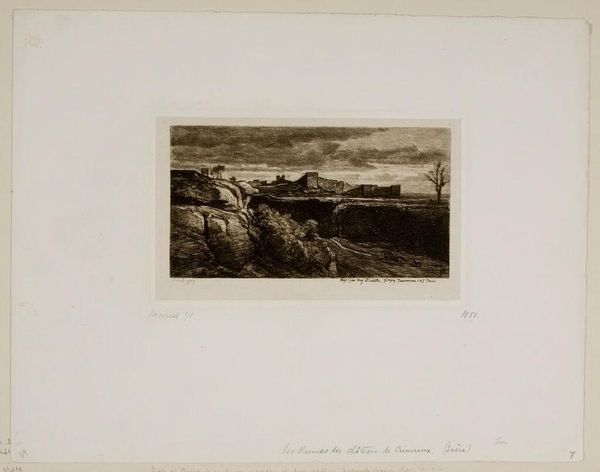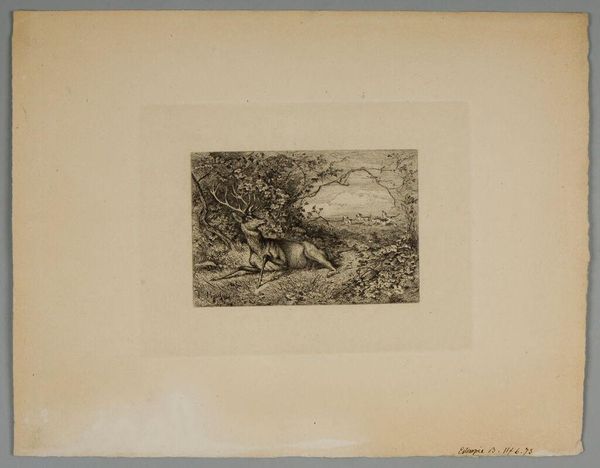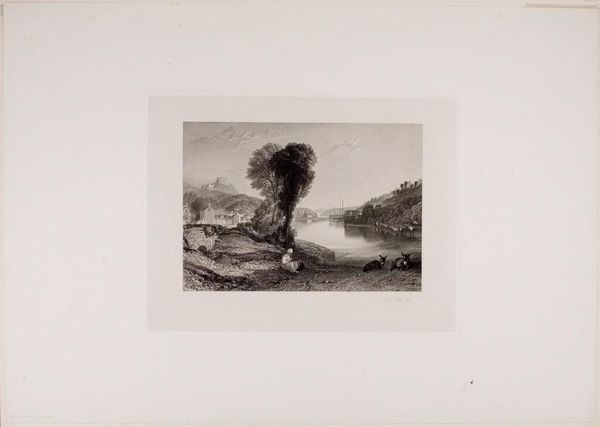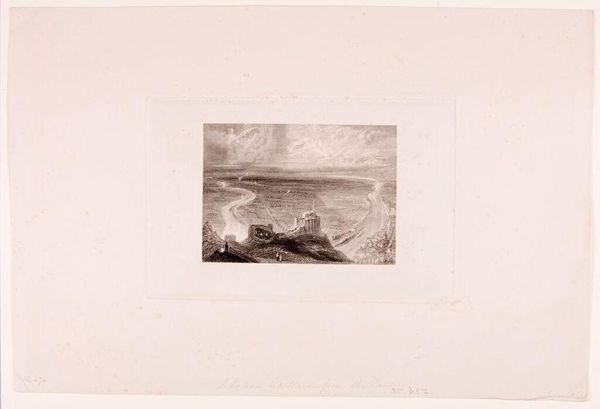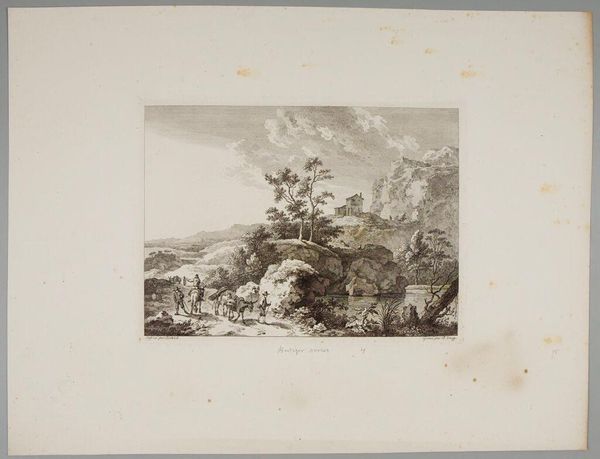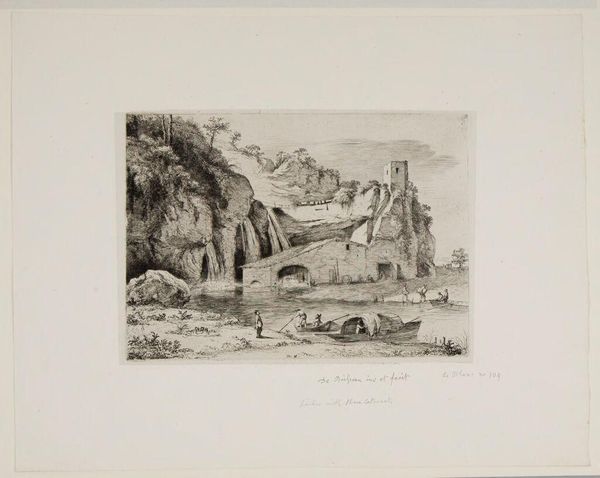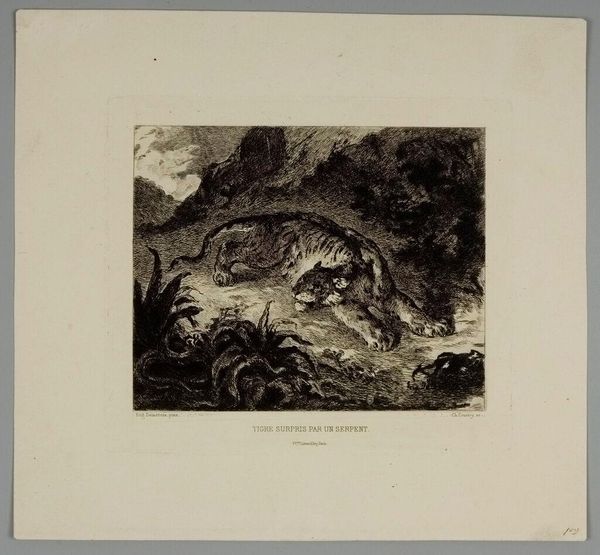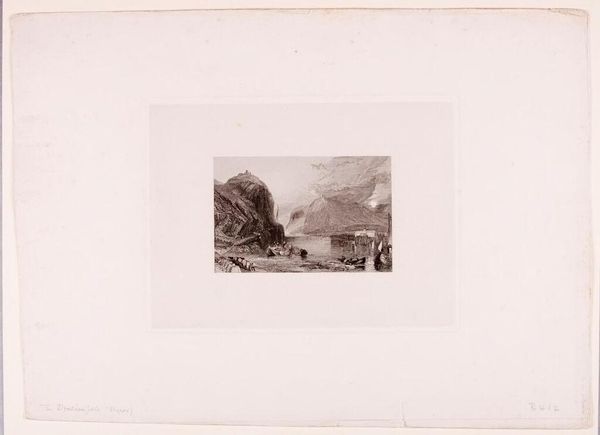
Copyright: CC0 1.0
Editor: Here we have Antoine Louis Barye's "Etude de Tigre," or "Study of a Tiger." It's a black and white print. I am struck by the animal’s gaze. What can you tell me about this image? Curator: Consider the tiger's role in colonial power structures. Barye created this during a period of intense European expansion and exoticism. How might this image, depicting a powerful, yet contained tiger, reflect European attitudes toward the "Orient" and its resources? Editor: That's fascinating! I hadn't considered that. So, the tiger becomes a symbol of a land to be dominated? Curator: Precisely. It’s a visual representation of power dynamics and the objectification of the natural world and its inhabitants. Reflect on how this image might have reinforced prevailing ideologies. Editor: I see the artwork differently now, understanding its connection to colonialism. Thanks for sharing your insights. Curator: It's a powerful reminder of how art can both reflect and perpetuate cultural narratives.
Comments
No comments
Be the first to comment and join the conversation on the ultimate creative platform.
